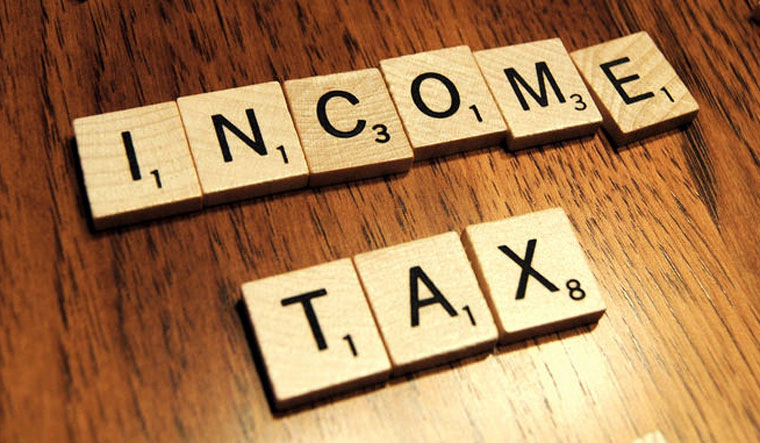The shift to digital systems has revolutionized countless industries, and payroll management is no exception. Moving away from traditional paper checks to digital check stubs is not just about staying current—it’s about enhancing efficiency, security, and accessibility in the workplace. However, transitioning to digital check stubs can seem daunting, especially for businesses accustomed to more traditional methods.
This article provides a comprehensive guide on the best practices for migrating to digital check stubs, ensuring that the transition is smooth, efficient, and beneficial for both employers and employees. Additionally, we will explore how to leverage tools like a free check stub maker and why paycheck stubs are crucial in this digital age.
Introduction: Understanding the Need for Digital Check Stubs
The traditional method of issuing paper checks has been a staple in payroll management for decades. However, the digital age demands more streamlined, efficient, and eco-friendly solutions. Digital check stubs, which are electronic versions of pay statements, offer a modern alternative that addresses many of the limitations of paper checks.
Migrating to digital check stubs can reduce costs, minimize environmental impact, and improve record-keeping accuracy. Moreover, employees can access their paycheck stubs anytime and anywhere, which enhances transparency and convenience. But before diving into the transition, it’s essential to understand the key benefits and challenges associated with digital check stubs.
Benefits of Digital Check Stubs
Digital check stubs offer numerous advantages over their paper counterparts. They are easier to manage, reduce the risk of errors, and eliminate the need for physical storage space. In addition, they support a greener workplace by reducing paper waste. Employees can receive their stubs instantly via email or through an online portal, enhancing convenience and accessibility. This ease of access is especially beneficial in today’s remote working environment.
However, the transition from paper to digital is not without its challenges. Understanding these challenges and how to address them is crucial for a successful migration.
Challenges of Migrating to Digital Check Stubs
One of the primary concerns is ensuring the security of sensitive employee data. Digital systems, while convenient, can be vulnerable to cyber threats if not properly managed. Additionally, some employees may be resistant to change, particularly those who are less tech-savvy or accustomed to the traditional system.
These challenges can be overcome with careful planning, the right tools, and a commitment to training and support. In the following sections, we’ll explore the best practices for a seamless transition to digital check stubs, including choosing the right free check stub maker and addressing common concerns.
Critical Considerations Before Migrating to Digital Check Stubs
Before embarking on the transition to digital check stubs, it’s crucial to evaluate your current payroll processes and identify areas where improvements can be made. Here are some key considerations to keep in mind:
Evaluate Your Current Payroll System
Begin by assessing your existing payroll system. Determine whether it can integrate with a digital check stub solution or if a complete overhaul is necessary. Compatibility is critical to ensuring a smooth transition. If your current system is outdated or incompatible, consider upgrading to a more modern, digital-friendly payroll system that can seamlessly incorporate digital check stubs.
Employee Readiness and Training
Understanding your workforce’s readiness for digital transition is another critical factor. Not all employees may be comfortable with digital tools. Offering training sessions or resources can help ease the transition. This might include workshops on how to access and use digital check stubs, as well as information on the benefits of making the switch.
Choosing the Right Tools
Selecting the right tools is essential for a successful migration. Many businesses opt for a free check stub maker to generate digital check stubs. These tools can automate the process, reducing manual errors and saving time. Ensure that the tool you choose is user-friendly, secure, and compatible with your existing systems.
Best Practices for Implementing Digital Check Stubs
Once you’ve evaluated your current system and prepared your employees, it’s time to implement the transition. Following these best practices can help ensure a smooth and successful migration:
1. Develop a Clear Transition Plan
Start by developing a comprehensive transition plan that outlines each step of the process. This plan should include timelines, responsibilities, and milestones to track progress. It’s essential to communicate this plan to all stakeholders, including employees, to ensure everyone is on the same page.
2. Choose a Reliable Digital Check Stub Provider
Whether you opt for a free check stub maker or a more robust solution, it’s crucial to choose a reliable provider. Look for a provider that offers security features such as encryption and data backup. Additionally, the provider should provide customer support in case any issues arise during the transition.
3. Ensure Data Security and Compliance
Data security is paramount when handling employee payroll information. Ensure that the digital check stub solution complies with relevant laws and regulations, such as the Fair Labor Standards Act (FLSA) and the General Data Protection Regulation (GDPR), if applicable. Implement robust security measures, such as encryption and multi-factor authentication, to protect sensitive data.
4. Pilot the Program
Before rolling out digital check stubs company-wide, consider piloting the program with a small group of employees. This allows you to identify any issues or challenges that may arise and address them before full implementation. Gather feedback from participants to make necessary adjustments.
5. Communicate with Employees
Clear communication is crucial during the transition. Keep employees informed about the changes, the benefits of digital check stubs, and how they can access their paycheck stubs. Provide a platform for employees to ask questions and express any concerns they may have. This open communication will help reduce resistance and encourage acceptance of the new system.
6. Provide Ongoing Support and Resources
The transition doesn’t end once digital check stubs are implemented. Ongoing support is essential to ensure the system operates smoothly. Provide resources such as FAQs, how-to guides, and access to customer support. Consider conducting follow-up training sessions if needed.
7. Monitor and Optimize the System
After implementation, regularly monitor the digital check stub system to ensure it’s functioning as expected. Gather feedback from employees and make adjustments as necessary. This could involve optimizing the user experience, enhancing security measures, or refining the process based on feedback.
The Role of Free Check Stub Makers in the Transition
A free check stub maker can be an invaluable tool during the migration process. These tools offer a cost-effective solution for generating digital check stubs without the need for significant investment in new software. They are particularly beneficial for small businesses or those with limited budgets.
When choosing a free check stub maker, look for features such as customization options, security protocols, and ease of use. It is essential to be able to customize check stubs to reflect your company’s branding and comply with legal requirements. Moreover, it ensures that the tool provides secure storage and access options to protect sensitive payroll information.
Ensuring Employee Satisfaction with Digital Check Stubs
Employee satisfaction is a critical aspect of a successful transition to digital check stubs. Here are some tips to ensure your employees are satisfied with the new system:
Address Concerns Promptly
Be proactive in addressing any concerns employees may have about the transition. Whether it’s about accessing their paycheck stubs or concerns about data security, provide clear and reassuring information.
Highlight the Benefits
Emphasize the benefits of digital check stubs, such as instant access, reduced environmental impact, and enhanced convenience. If employees understand how the change benefits them, they are more likely to embrace it.
Offer Flexibility
Offer employees the option to receive either digital or paper check stubs during the transition period. This flexibility can help ease the change and accommodate those who may need more time to adjust.
Provide a User-Friendly Interface
Ensure that the digital check stub system is easy to navigate. A user-friendly interface can significantly improve employee satisfaction. Offer training or tutorials to help employees become comfortable with the system.
Conclusion: The Future of Payroll Management
Migrating to digital check stubs is a significant step toward modernizing your payroll system. By following best practices and leveraging tools like a free check stub maker, you can ensure a smooth transition that benefits both your organization and your employees. Digital check stubs not only streamline payroll processes but also contribute to a more sustainable and efficient workplace.
The future of payroll management is digital, and embracing this change now will position your organization for success in the years to come. Whether you’re a small business owner or a large corporation, the transition to digital check stubs can provide lasting benefits, from cost savings to enhanced employee satisfaction.



